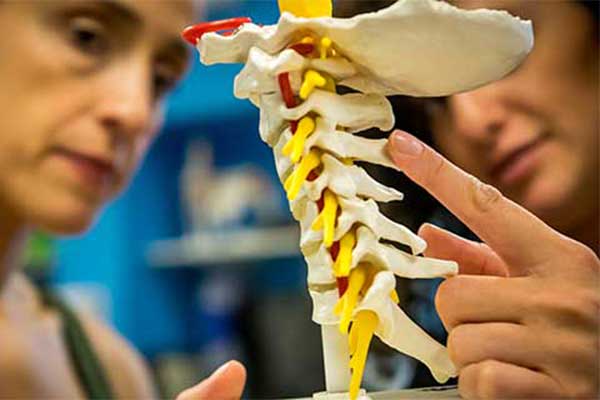
Cervical Spondylosis
The primary cause of cervical spondylosis is the natural aging process, which leads to the gradual breakdown of the cartilage and bones in the cervical spine. As the intervertebral discs lose their elasticity and water content, they become thinner and more susceptible to damage. Additionally, the formation of bone spurs, known as osteophytes, can occur as the body tries to stabilize the affected vertebrae. These changes can result in the narrowing of the spinal canal and compression of the nerve roots, leading to various symptoms.
The symptoms of cervical spondylosis can vary from person to person and depend on the extent of degeneration and nerve involvement. Common symptoms include neck pain and stiffness, which may radiate to the shoulders and arms. Some individuals may experience tingling, numbness, and weakness in the upper extremities, along with headaches and difficulty with coordination. In severe cases, compression of the spinal cord can cause more serious symptoms such as problems with balance, difficulty walking, and even bladder or bowel dysfunction.
Diagnosis of cervical spondylosis involves a thorough medical history, physical examination, and imaging studies such as X-rays, magnetic resonance imaging (MRI), or computed tomography (CT) scans. These tests help evaluate the extent of degeneration, identify the presence of bone spurs or herniated discs, and determine the degree of nerve compression.
Treatment for cervical spondylosis focuses on managing pain, improving neck mobility, and reducing nerve compression. In mild cases, conservative measures such as rest, physical therapy, and pain medications (e.g., nonsteroidal anti-inflammatory drugs) may be sufficient to alleviate symptoms. Physical therapy exercises help strengthen the neck muscles, improve posture, and increase range of motion.
In more severe cases, when conservative treatments fail to provide relief or when neurological symptoms are present, other treatment options may be considered. These may include the use of muscle relaxants, corticosteroid injections, or the application of traction to gently stretch the neck and relieve pressure on the affected nerves. In rare cases where there is significant spinal cord compression, surgery may be necessary to decompress the affected area and stabilize the spine.
